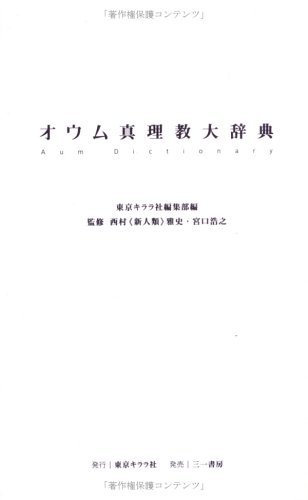6 0 0 0 OA ツーリズム空間の同心円性と関係距離の抽出
- 著者
- 滝波 章弘
- 出版者
- The Human Geographical Society of Japan
- 雑誌
- 人文地理 (ISSN:00187216)
- 巻号頁・発行日
- vol.46, no.2, pp.121-143, 1994-04-28 (Released:2009-04-28)
- 参考文献数
- 71
- 被引用文献数
- 5 2
Since the second half of the 1970's, there have been many studies in the literature of tourism on the spatial behavior pattern. But most of these studies have failed to built a general model of tourist space, focusing too closely on specific facts derived from simple correlation analysis between a certain spatial pattern and other socioeconomic or spatio-temporal variables. In the present article, we discuss the fundamental geographical notions of region and distance, creating a concentric tourist spatial model by integrating two existing models: S. C. Plog's (1973) and J.-M. Miossec's (1977). What we mean by the concentric model is that the trip “distance” influences the tourist's behavior, perception and the frequency of trips, and vice versa.We collected the data for this study in September 1992 at an elementary school in Yokohama (a large city situated about 30km south of Tokyo). It is a binary matrix of 338 recreational family trips from Yokohama in the line and 94 tourist-/trip-variables in the row which indicate different types of tourists and trip patterns. Trip-variables include destination (s), trip duration, trip organizer, group composition, means of transportation, nature of activity at the destination, tourist's image of the destination, etc. Tourist-variables include quantity of information and ability to use it, duration of holidays, expenditures for tourism and frequency of recreational trips per year, etc.First of all, we showed how several “tourism regions” (S. L. J. Smith, 1989) are created by the two “regionalizations” (Smith): the regionalization based on the denomination by tourists of the destination zone and the regionalization based on the route taken in a real trip.Next, we summarized the trip matrix data and verified the concentric spatial model, applying Hayashi's “theory of the quantification 3” -mathematically almost the same analysis as the correspondence analysis in the Anglo-Saxon or French world. This analysis of quantification changes the original and arbitrary arrangement of the trips on the axis of the line into a new significant and revealing arrangement (simultaneously, every trip is given a quantity indicating its point on the axis). In other words, this method locates closely on the axis trips which resemble each other in their reaction pattern to the variables, and it distances trips which do not resemble each other. This analysis also changes the original arrangement of the variables on the axis of the row into a new meaningful arrangement; it locates closely/distances the variables according to their reaction pattern to the trips. This analysis replaces, in fact, both the trips and the variables on the axes in order to keep the highest possible correlation between the quantified trips and the quantified variables. The highest possible correlation means the new arrangements of the trips and of the variables have the same structure and the same meaning. Thus this analysis creates from one original binary matrix several new binary matrices independent from each other which summarize the data structure of tourist behavior, whereby the first matrix is the most important, and the second matrix is the second most important. We can explain these new matrices with the variable-axes.We found three important variable-axes: the trip “distance” (the most important element), the nature of the activity in the destination zone and the tourist's ability to travel (economic status and information level). Observing the three-dimensional data space composed by these axes, we found one dominant and five secondary variable masses of the tourist's profile and behavior pattern. The dominant one is about a two day 100km family trip, not planned by a tourist agency but by the family itself, for the purpose of enjoying nature and practicing sports.
6 0 0 0 OA Some Formal Properties of the Density Matrix
- 著者
- Kôdi HUSIMI
- 出版者
- THE PHYSICAL SOCIETY OF JAPAN , The Mathematical Society of Japan
- 雑誌
- Nippon Sugaku-Buturigakkwai Kizi Dai 3 Ki (ISSN:03701239)
- 巻号頁・発行日
- vol.22, no.4, pp.264-314, 1940 (Released:2009-06-09)
- 著者
- 徐 竹渓
- 出版者
- 愛知県立芸術大学音楽学部音楽学コース
- 雑誌
- ミクスト・ミューズ : 愛知県立芸術大学音楽学部音楽学コース紀要 = Mixed muses
- 巻号頁・発行日
- no.12, pp.140-141, 2017-03-31
6 0 0 0 IR 都立高等学校における男女別入学定員の変遷
- 著者
- 小野寺 みさき
- 出版者
- 早稲田大学教育・総合科学学術院教育会
- 雑誌
- 学術研究. 人文科学・社会科学編 = Academic studies and scientific research (ISSN:21866996)
- 巻号頁・発行日
- no.62, pp.53-68, 2013
6 0 0 0 OA 鍼灸と自然治癒力の出逢いをめぐって
- 著者
- 松田 博公
- 出版者
- 社団法人 全日本鍼灸学会
- 雑誌
- 全日本鍼灸学会雑誌 (ISSN:02859955)
- 巻号頁・発行日
- vol.58, no.2, pp.156-165, 2008 (Released:2008-09-02)
内外の情勢は、 日本の鍼灸界に日本鍼灸学の構築を要求しています。 日本鍼灸の特色の一つを、 自然治癒力思想を根幹とすることだと考え、 そのルーツを探るのが本発表の課題です。 現在われわれが口にする自然治癒力思想を顧みると、 それは、 中国伝統医学を継承したものではなく、 江戸中期に輸入された蘭学由来のものであるという仮説が浮かび上がります。 幕末に刊行された江戸期最大の養生書 『病家須知』 に記された<自然作用力>というキーワードに着目し、 和田啓十郎の漢方復興運動の論拠となった<自然良能>の思想などを振り返りながら、 日本の鍼灸家が親しんできた自然治癒力思想が、 西洋のヒポクラテス医学のものであることに迫ります。 そして、 江戸期の日本人がヒポクラテス医学の自然治癒力思想を受け入れた背景には、 <邪正一如>という日本独自の治癒力思想があったという仮説も提出して、 検討に供したいと思います。
6 0 0 0 OA 志賀重昂全集
- 著者
- 志賀重昂全集刊行会 編
- 出版者
- 志賀重昂全集刊行会
- 巻号頁・発行日
- vol.第6巻, 1929
6 0 0 0 OA 世界の猶太勢力と秘密結社の解剖
- 著者
- 足立 加勇
- 出版者
- 日本マンガ学会 ; 2002-
- 雑誌
- マンガ研究
- 巻号頁・発行日
- vol.22, pp.6-33, 2016-03
6 0 0 0 オウム真理教大辞典
- 著者
- 東京キララ社編集部編
- 出版者
- 三一書房(発売)
- 巻号頁・発行日
- 2003
6 0 0 0 OA 年金財政議論における「誤解」の検証~企業年金に携わる実務家の視点から~
- 著者
- 谷内 陽一
- 出版者
- 日本年金学会
- 雑誌
- 日本年金学会誌 (ISSN:02861739)
- 巻号頁・発行日
- vol.36, pp.67-76, 2017-04-01 (Released:2018-05-08)
- 参考文献数
- 23
6 0 0 0 OA Web上の情報からの人間関係ネットワークの抽出
6 0 0 0 OA 昆虫に性ホルモンはあるか
- 著者
- 嶋 誠悟 山元 大輔
- 出版者
- 日本比較内分泌学会
- 雑誌
- 日本比較内分泌学会ニュース (ISSN:09139044)
- 巻号頁・発行日
- vol.2003, no.111, pp.111_11-111_31, 2003 (Released:2003-12-23)
- 参考文献数
- 126
6 0 0 0 OA 聴覚の情報処理
- 著者
- 倉片 憲治
- 出版者
- 公益社団法人 計測自動制御学会
- 雑誌
- 計測と制御 (ISSN:04534662)
- 巻号頁・発行日
- vol.41, no.10, pp.708-711, 2002-10-10 (Released:2009-11-26)
- 参考文献数
- 11
6 0 0 0 IR ナツヅタの樹液による芋粥再現実験
- 著者
- 有馬 哲夫
- 出版者
- 一般財団法人 日本英文学会
- 雑誌
- 英文学研究 (ISSN:00393649)
- 巻号頁・発行日
- vol.59, no.2, pp.394, 1982-12-01 (Released:2017-04-10)





